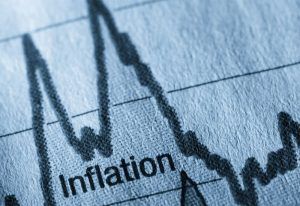What the Inflation Data Really Means for You
While official government inflation numbers have fallen from their peak, Americans still feel the economic pain from rising prices. The annual Consumer Price Index (CPI) inflation rate peaked at 9.1% in June 2022 and has come down in recent months, yet it’s still sharply higher than two years ago.
Inflation Impact: Americans Spend $709 More Each Month
The average American household spent $709 more in July 2023 than they did two years ago to buy the same goods and services, according to Moody’s Analytics.
That makes sense. While the July CPI hit 3.2% following the 3% increase in June—that is a cumulative number. That means the 3% June 2023 increase is on top of the 9.1% increase in June 2022. That’s a hefty number over two years ago.
Just because official government inflation numbers have fallen doesn’t mean your monthly expenses are down. Actually, it’s the opposite.
Digging deeper inside the latest CPI, the price increases are still staggering on a year-over-year basis:
- Food away from home (think restaurants) increased 7.1%
- Shelter prices (housing) were up 7.7%
- Transportation services (like airfares) were up 9%.
Will prices ever retreat to their pre-pandemic levels? It’s unlikely, experts say.
Gasoline prices are heading higher again, with regular gasoline prices up 30 cents a gallon in mid-August from a month earlier, according to OPIS. As far as food goes, a number of factors are conspiring to keep the price trend higher there including rising food transportation costs, poor weather for the crops (heat and drought), and El Niño, a weather pattern that can worsen drought.
The Last Mile Problem
Fed watchers are now pointing to the so-called “last mile problem” as it relates to inflation. Sure, inflation has come down from 9.1% to 3.1%, but it still remains above the Fed’s 2% target inflation rate, and that represents the very challenging last mile in the inflation fight.
While the Federal Reserve has already hiked interest rates to their highest level in 20 years to battle inflation, it may not be enough. Consider this: “Academic studies and other research concluding the levels of inflation seen over the last two years can’t be fixed without a downturn, and prominent economists projecting a jump in the U.S. unemployment rate to between 5% and 10% from the current 3.5% – with millions out of work – might be the price that’s paid [to fix inflation],” according to an Aug. 14 Reuters article.
[ad_2]
Source link


